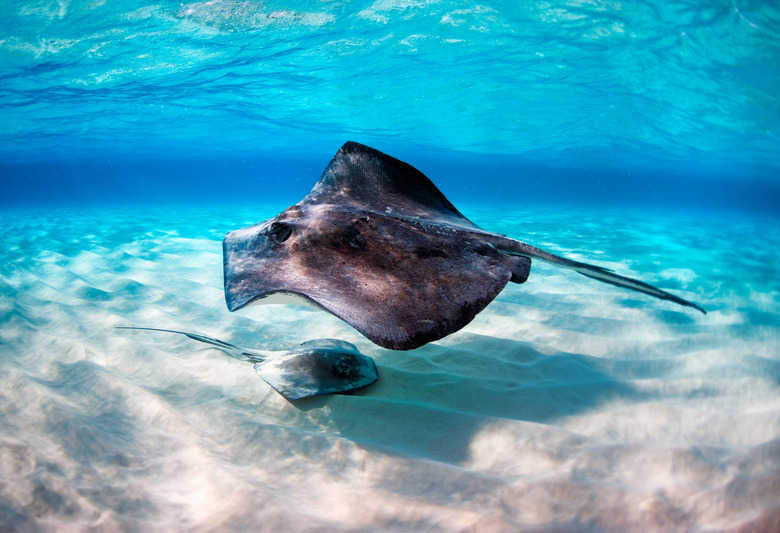The Differences Between Stingrays & Skates
From their flapping wings to their long tails to the way they seem to fly through the water, rays are some of the most compelling sea animals for humans to watch. However, it may be difficult for casual viewers to determine if the animal they see is truly a stingray or perhaps its visually similar cousin, the skate. While the sea creatures have a lot of common features, important differences help distinguish between the two animals.
TL;DR (Too Long; Didn't Read)
Skate and stingray animals belong to the same family – elasmobranchs – because they have cartilage skeletons and gill slits near their heads. However, rays are larger with stinging spines on their tails while skates are small with prominent dorsal fins. Rays give birth to live young (viviparous), and skates lay eggs (oviparous).
Elasmobranchs: Family Resemblance
Elasmobranchs: Family Resemblance
The reason stingray and skate animals are difficult to distinguish is because they are so closely related. In fact, both species are elasmobranchs; this group, which also includes sharks, shares two common features – a skeleton made of flexible cartilage, rather than bone, and gill slits near the head. Skates and rays also look alike since they are both dorsoventrally flattened. This means the back (dorsal) and stomach (ventral) regions are pushed together so the animal appears like a pancake or saucer. In terms of scientific orders, rays may be myliobatiformes, pristiformes or torpediniformes, but all skates are rajiformes (rajidae).
Skate or Stingray?
Skate or Stingray?
Although skate and stingray species share common features, there are also important differences between them. The most significant difference is the way the animals reproduce: skates are oviparous, and rays are viviparous. This means that skates lay eggs in rigid egg cases, which some people call a mermaid's purse. Rays, on the other hand, give birth to live young.
Of course, unless the creatures happen to be giving birth or laying eggs in front of the human viewer, this differentiation is not very helpful. Other, more reliably observable differences include body shape, body projections and tail characteristics. Rays tend to be larger and look like kites with only slight dorsal fins and long, slender tails punctuated with stinging spines. Skates are smaller and have obvious dorsal fins along their backs and fleshier tails without spines. If observers could look inside the animals' mouths, they would also notice that skates have smaller teeth.
While it is tricky to differentiate between a skate and a stingray, the unique features of each animal make it possible to correctly identify which creature a viewer observes flapping and flying through the sea water. Understanding these differences can also deepen their appreciation for these magical marine animals.
Cite This Article
MLA
Mayer, Melissa. "The Differences Between Stingrays & Skates" sciencing.com, https://www.sciencing.com/differences-between-stingrays-skates-8375220/. 22 November 2019.
APA
Mayer, Melissa. (2019, November 22). The Differences Between Stingrays & Skates. sciencing.com. Retrieved from https://www.sciencing.com/differences-between-stingrays-skates-8375220/
Chicago
Mayer, Melissa. The Differences Between Stingrays & Skates last modified March 24, 2022. https://www.sciencing.com/differences-between-stingrays-skates-8375220/
